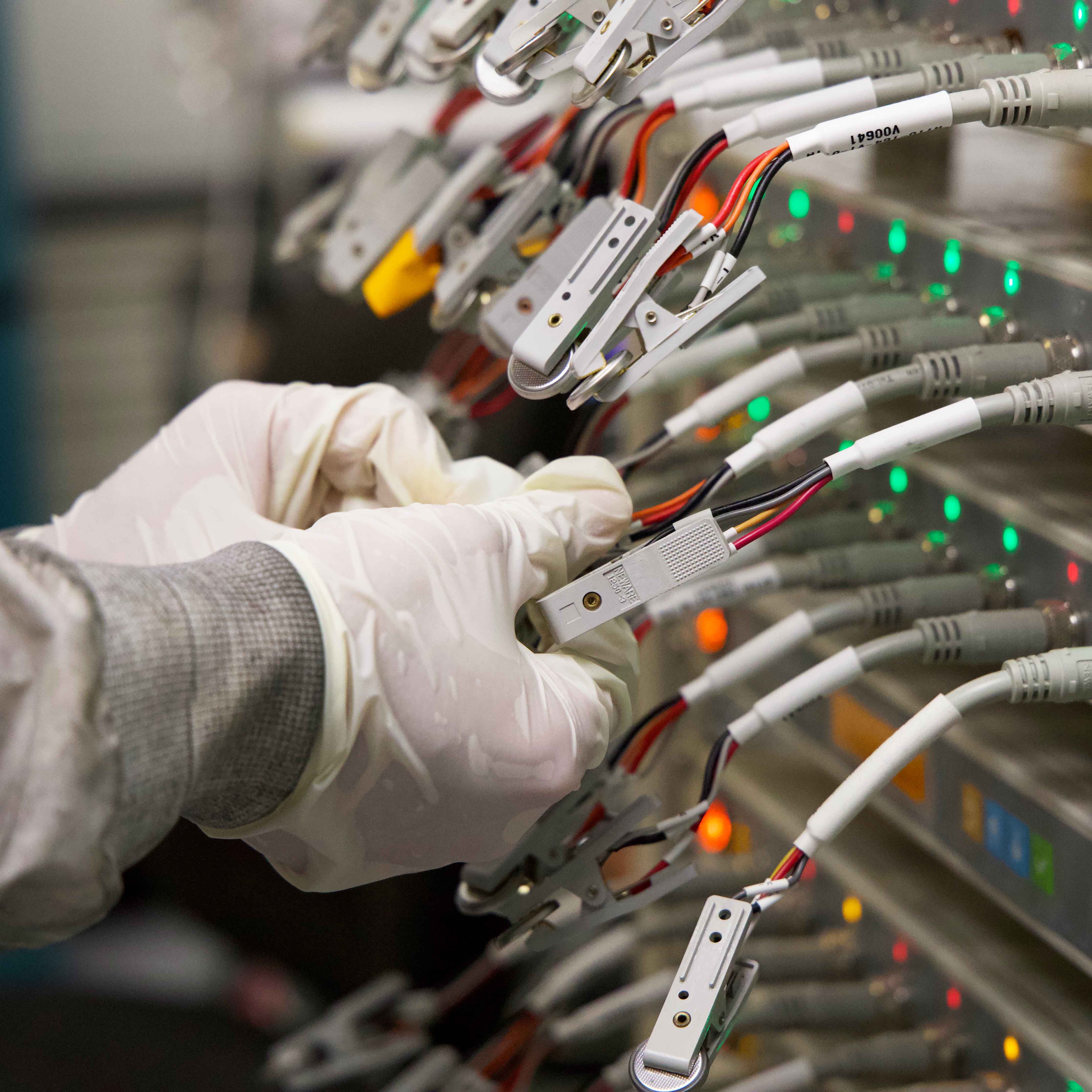News Story
Pendse and Klauda’s Protein Research on Cover of Journal of Molecular Biology

To learn more about the research in this article, see Pendse, P. Y., Brooks, B. R., and Klauda, J. B. (2010). Probing the Periplasmic-Open State of Lactose Permease in Response to Sugar Binding and Proton Translocation. JMB 404, 506:521.
The work, described in "Probing the Periplasmic-Open State of Lactose Permease in Response to Sugar Binding and Proton Translocation," was performed by ChBE graduate student Pushkar Pendse, ChBE Assistant Professor Jeffery Klauda, and their collaborator Bernard Brooks (Laboratory of Computational Biology, National Institutes of Health). The paper presents a model of a previously unmapped protein activity and introduces the new computational technique used to obtain the information.
Lactose permease (LacY), the subject of the team's research, is a protein found in the single-cell E. coli bacterium. It is a gateway embedded in E. coli's plasma membrane, which protects the interior of the cell (the cytoplasm), and its job is to transport various sugar molecules across that barrier. It accomplishes this by undergoing a conformational change (rearranging its molecular structure): initially, the protein is open only to the space between the inner and outer membrane, called the periplasm. After collecting a sugar molecule from the periplasm, the protein shuts on the periplasm and then swings open to the other side, releasing the molecule into the cytoplasm. It can also perform these actions in the reverse direction.

Above: An illustration showing how the LacY protein alters its structure in order to create gateways for transporting sugar molecules across a cell's plasma membrane.
"During the sugar transport cycle, LacY structurally alternates between states which are open to cytoplasm and periplasm," Pendse explains. "The structure of LacY when it is open to the cytoplasm is known, but its structure when it is open to periplasm is not. We are trying to determine the atomic-level details of the periplasmic-open structure, because we want to understand what makes LacY switch from one configuration to the other."
And, he says, it's important to know. "LacY is one of an entire class of protein gatekeepers known as the Major Facilitator Superfamily, some of which are known to expel antibiotics from bacteria, leading to drug resistance. In many cases, we don't know enough about their structures or what triggers them to remove a drug molecule from a cell. We're trying to extend what we learn about LacY from our new simulation technique to eventually determine the unknown conformational changes in other membrane transport proteins."
LacY's conformational change from one state to another takes a few milliseconds. This is too long to examine using typical molecular dynamics (MD) simulations, which can predict and model the motion of molecules at an atomic level. The research team used a new hybrid technique, developed in Klauda's lab, which first uses a different computational method called self-guided Langevin dynamics (SGLD) to enhance the protein's motions, then uses that data in an MD simulation. The team was able to create a model of LacY's periplasmic-open structure that agreed with indirect experimental findings, explained the mechanisms involved in its state change, and suggested that certain mutations in the protein may help stabilize a structure open to the periplasm. It is the first computational study to determine widespread conformational change in LacY or any membrane protein of its classification using atomistic simulations.
For More Information:
Visit Professor Klauda's web site »
Published November 22, 2010











